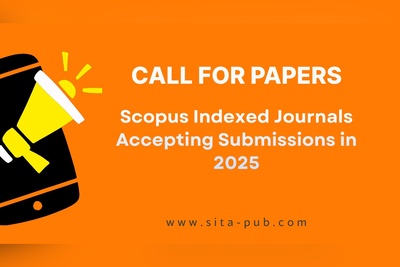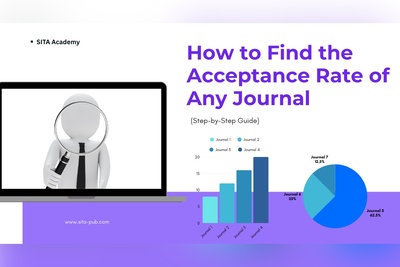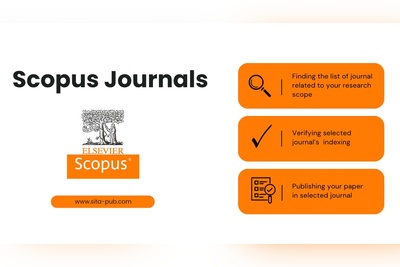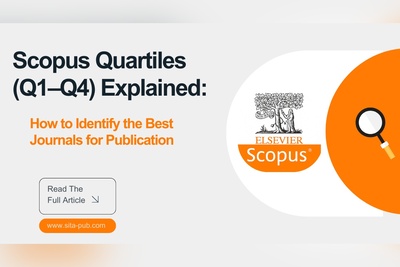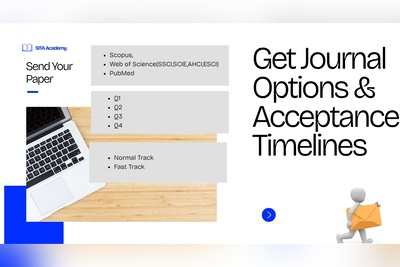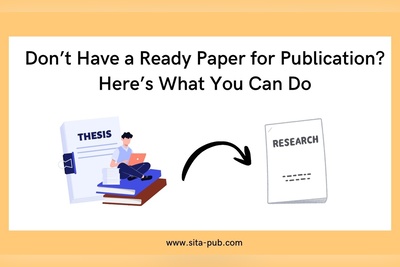Experts Reveal: How to Get Your Paper Accepted Even Without Prior Publications
Learn how to get your first research paper accepted even without prior publications. This complete guide explains journal selection, manuscript preparation, peer review strategies, and common mistakes to avoid. Includes a practical checklist.
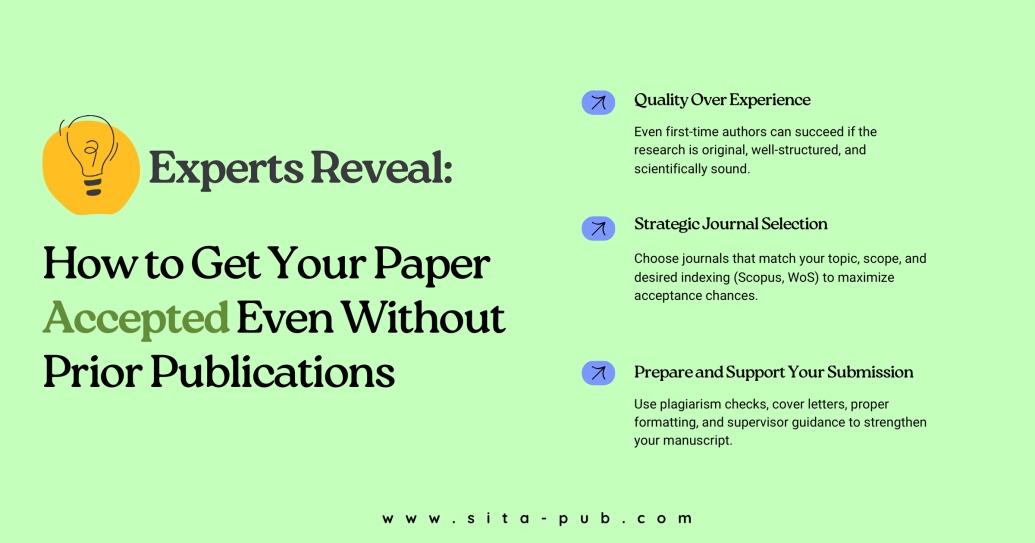
Publishing a research paper can feel daunting, especially for graduate students, early-career researchers, or new faculty members who have never published before. Many fear that journals will automatically reject submissions if the authors lack a track record of publications.
However, having no prior publications does not automatically disqualify you. Journals primarily focus on the scientific quality, originality, and clarity of your manuscript. A well-prepared paper, even from a first-time author, can compete successfully in reputable journals.
In today’s academic world, the pressure to publish is real. Universities, funding agencies, and professional institutions worldwide expect researchers to demonstrate productivity. This pressure has led to the misconception that prior publications are mandatory. The truth is, even first-time authors can achieve acceptance by strategically approaching the publication process.
This article provides a detailed, practical guide for first-time authors who want to get their research published, without prior publications.

Can You Get Your Paper Accepted Without Prior Publications?
The short answer is yes, but it requires planning, diligence, and awareness of journal requirements.
Journals evaluate manuscripts primarily on three pillars:
Scientific merit: Does the research provide new knowledge, innovative methods, or important insights?
Clarity and presentation: Is the manuscript well-written, organized, and formatted according to journal standards?
Relevance to the journal: Does the topic fit the journal’s aims and scope?
Prior publications can give reviewers more confidence in your work, but a strong, original manuscript often outweighs experience.
Some key points to note:
Research quality matters more than author history. Journals care about your results, analysis, and interpretation.
Supporting materials like a plagiarism report, cover letter, and proper figures can compensate for a lack of prior publications.
Supervisor guidance can help polish the paper, improving acceptance chances.
Step-by-Step Strategies for First-Time Authors
Publishing for the first time can feel overwhelming, but a structured approach greatly increases success probability.
1. Choose the Right Journal
Selecting a journal that aligns with your research is crucial. Journal mismatch is one of the most common reasons for desk rejection.
Factors to consider:
Scope alignment: Ensure your research topic matches the journal’s stated focus. For example, a clinical study belongs in a medical journal, not a general science journal.
Indexing and quartile ranking: Decide which indexing is important (Scopus, Web of Science, PubMed). Quartiles indicate journal prestige and competitiveness:
Quartile | Description | When to Choose |
Q1 / Q2 | High-impact, competitive journals | Your research is innovative or covers trending topics |
Q3 / Q4 | Moderate/low impact, less competitive | Suitable for smaller-scale studies or first-time publications |
Audience reach: Decide if open-access or subscription journals are better for visibility and citations.
Practical advice: First-time authors often benefit from Q2 or Q3 journals—they provide recognition while maintaining reasonable acceptance chances.
Example: A graduate student with a novel social sciences study may target a Q3 Scopus journal to ensure initial publication while gradually building their track record.
2. Get Guidance From Supervisors or Advisors
Your supervisor or mentor is your most valuable resource. They can help with:
Selecting journals that match your topic
Reviewing your manuscript for clarity, logic, and scientific rigor
Advising on ethical approvals, data presentation, and co-authorship
Navigating submission portals and understanding journal-specific rules
Pro Tip: Schedule meetings with your advisor before finalizing the manuscript, not after. Early feedback helps avoid major revisions later.
Even if you are working independently, reaching out to experienced colleagues or academic peers can provide valuable insights.
3. Prepare Your Manuscript Carefully
High-quality preparation is essential. Journals often reject manuscripts for formatting errors, poor writing, or incomplete information, even if the science is sound.
Key preparation tips:
Follow formatting guidelines: Font size, headings, citations (APA, Vancouver, or journal-specific)
Use IMRAD structure: Introduction, Methods, Results, and Discussion
Craft a clear abstract: Summarize your study concisely, highlighting novelty
Tables and figures: Ensure clarity, proper labels, high resolution
References: Verify completeness, formatting, and DOI availability
Example: Submitting a study with poorly labeled tables or misaligned citations often leads to desk rejection, even for high-quality research.
4. Prepare All Required Materials
Journals require supplementary documents for submission:
Cover letter: Introduce your research, explain why it fits the journal, and highlight significance
Plagiarism report: Most journals expect <15–20% similarity
Ethical approval: Required for human or animal studies
Supplementary files: Include data tables, figures, code, or appendices if requested
First-Time Author Checklist:
Question | Action / Strategy |
Do you have a plagiarism report? | Run plagiarism checks, ensure originality |
Are you a non-native English speaker? | Use professional English editing services |
Do you have a professional cover letter? | Highlight research significance and journal fit |
Have you followed journal formatting? | Ensure headings, references, and tables meet guidelines |
Have you consulted your supervisor/advisor? | Get feedback on manuscript and ethical compliance |
Are all supplementary materials ready? | Check figures, appendices, and datasets |
5. Submission Strategy
Submitting properly ensures smooth peer review:
Follow online submission guidelines carefully
Track submission: Record submission date, manuscript ID, and communication
Respond promptly: Editors may request revisions or clarifications
Tip: Some journals offer “fast-track” submission for urgent cases. Only use this if deadlines are strict.
6. Handling Peer Review
Even first-time authors face revisions. Follow these strategies:
Respond carefully: Address reviewer comments point by point
Stay professional: Avoid defensive responses
Track changes: Highlight edits clearly for editors
Meet deadlines: Submit revisions within the requested timeframe
Example: A student responding constructively to reviewer comments on data interpretation often secures acceptance, whereas ignoring feedback can lead to rejection.
7. Additional Tips for First-Time Authors
Start early: Prepare manuscript and supplementary materials alongside your research writing
Focus on quality, not speed: Peer review takes weeks to months
Plan for publication fees: APCs may range from $300 to $3,000
Have backup journals: Keep 2–3 alternatives in case of rejection

8. Common Mistakes to Avoid
Submitting to a journal outside your research field
Ignoring formatting and style guidelines
Submitting incomplete or low-quality figures and tables
Skipping plagiarism checks
Failing to provide a strong cover letter

Conclusion
Publishing without prior experience is entirely possible. First-time authors can succeed by:
Selecting the right journal
Following formatting and submission guidelines
Preparing all necessary documents in advance
Seeking guidance from supervisors or mentors
Responding professionally to reviewer comments
Even a single publication in a reputable journal establishes credibility and opens doors for future research, grants, and collaborations.
Publication Assistance Services | SITA Academy
SITA Academy provides expert guidance for first-time authors, including:
Recommendations for suitable, reputable journals (Scopus, WoS, PubMed)
Editing, translation, and plagiarism checking services
Assistance with submission, peer review, and revisions
Support for researchers worldwide to meet international academic standards
With a proven track record, SITA Academy helps researchers navigate publication challenges and secure acceptance, even without prior publications.
